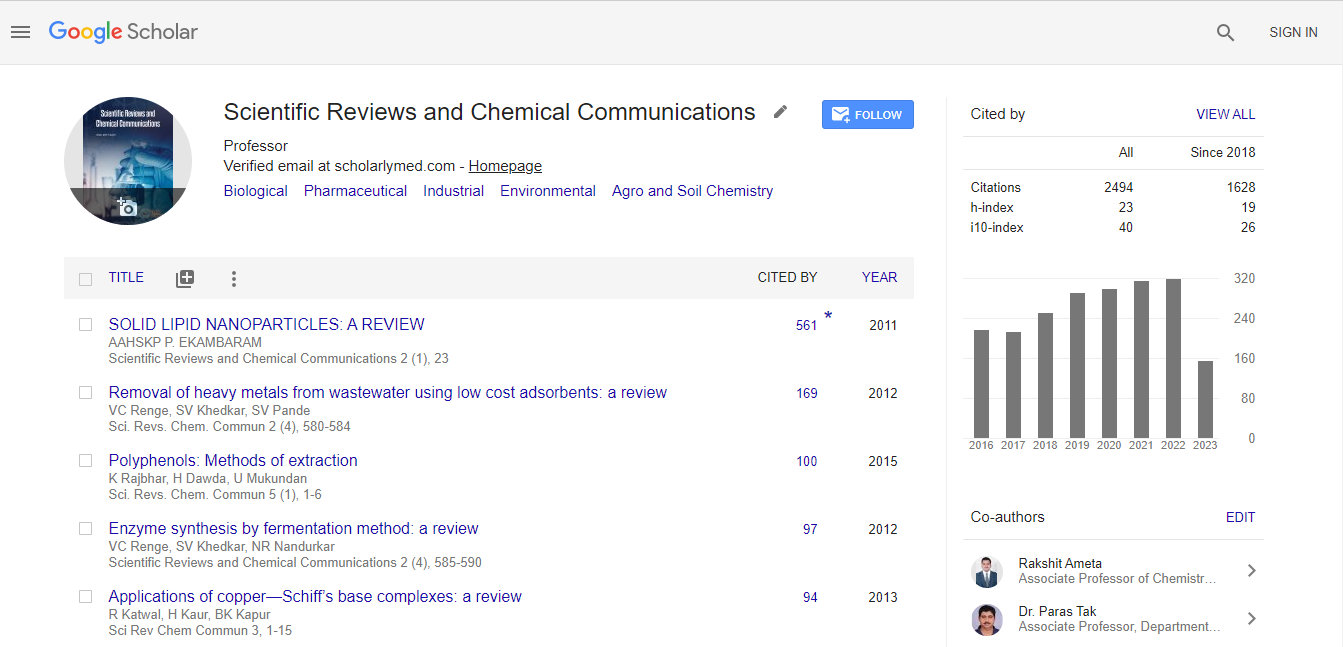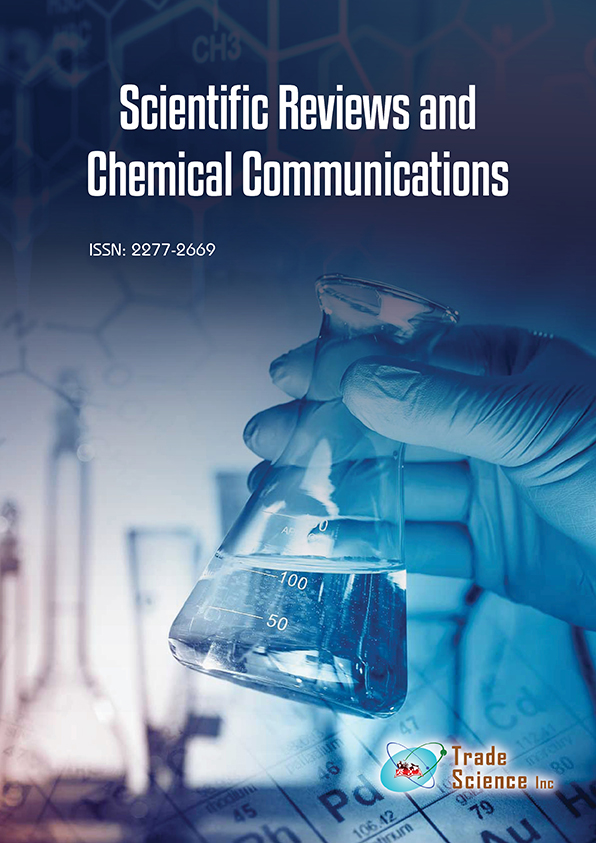Editorial
, Volume: 9( 2) DOI: 10.37532/2277-2669.2020.9(2).e101Analysis on Donkey Milk Based Fermented Product
- *Correspondence:
- Suresh C.Ameta
Department of Chemistry,
Rajasthan, India
Tel: +91 9414158972,
E-mail: ameta_sc@yahoo.com
Received: Julyl 10, 2020; Accepted: July 20, 2020; Published: July 30, 2020
Citation: Suresh CA, Analysis on Donkey Milk Base Fermented Product, Sci Revs Chem Commun. 2020; 9(2): e101.
Abstract
To The Editor
I am pleased to introduce Journal of Scientific Reviews and Chemical communication (SRCC) a rapid peer reviewed Journal which provides an opportunity to share the information the Volume 9 Issue 2. It comes under the various field like physical science, chemistry, physics biochemistry the rapid publication of original and significant research in the fundamental theory, practice and application of Scientific and Chemical science including Inorganic, Organic, Physical, Analytical, Biological, Pharmaceutical, Industrial, Environmental, Agro and Soil Chemistry as well as Chemical Physics and Engineering.
The Journals aims to flourish and to publish most complete and reliable source of information on the discoveries and current developments in the mode of original articles, review articles, case reports, short communications, etc. in all areas of the field and making them freely available through online without any restrictions or any other subscriptions to researchers worldwide.
I would like to describe a brief analysis about donkey milk fermented product, the possibility of producing a fermented beverage from donkey's milk using probiotic bacterial strains Lactobacillus rhamnosus AT 194, CLT 2/2, and Lactobacillus casei LC 88, isolated from Parmigiano Reggiano cheese was investigated. Chemical-physical and microbiological properties of the raw milk demonstrated that has low microbiological load and an elevated content of lysozyme.
Bacterial strains employed for fermentation had good growth capacity in donkey's milk only after an initial adaptation phase. Extremely high percentage of viable bacteria was found in final beverage, even after 30-day shelf life. The activity of lysozyme was virtually unchanged with respect to initial values. Sensorial analysis permitted individuation of differences between three bacterial strains used for fermentation in terms of descriptors relative to aromatic-olfactory qualities. Based on above result, technology can be proposed for production of fermented beverage from donkey's milk that can utilize by small producers. This would allow production of beverage that would be well accepted by consumers interested in a product with favorable therapeutic properties integrated with probiotic bacteria.
I take this opportunity to acknowledge the contribution of Efstathia Tsakali during the final editing of articles published and the support rendered by the editorial assistant, in bringing out issues of SRCC Volume 7 Issue 3 with appropriate subject and knowledge. I would also like to express my gratitude to all the authors, reviewers, the publisher, the advisory and the editorial board of SRCC, the office bearers for their support in bringing out yet other volumes of SRCC and look forward to their unrelenting support to bring out the Volume 10 of SRCC in scheduled time.

